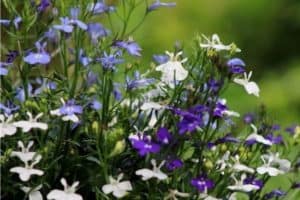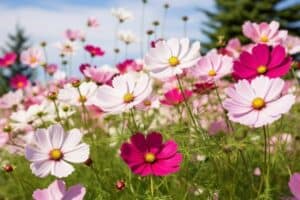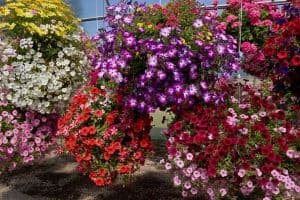Cinerarias are beautiful flowering plants with tight clusters of daisy like flowers surrounded by large green leaves.
They’re perfect for garden beds, containers and you can even grow them indoors.
In this article, you’ll learn about planting and caring for cinerarias, so you can enjoy their stunning flowers for many months.
This post contains affiliate links. Please read the disclosure for more info.

Cinerarias are from the Asteraceae family, the same plant family as daisies, sunflowers and marigolds.
They’re classified as tender perennials but cinerarias are usually grown as annuals.
Most varieties grow to about 12 to 15 inches (30 to 38cm) tall but there are also dwarf varieties available.
Cineraria varieties to plant in your garden
If you’re interested in growing cineraria plants there are many beautiful varieties to choose from including:
Florist’s cineraria – colorful flower clusters including dark pink, purple and blue
Starships – a popular variety that grows 12 inches (30 cm) tall, with large colorful flower heads
Dwarf cineraria – grows 7 to 12 inches (20 to 30 cm) tall, with single daisy-like flowers
Location
Cineraria plants grow best in a spot that is partially shaded, like a shady corner of the garden or underneath a tree.
You can also grow cinerarias in containers underneath a pergola or covered area.
Flowers
Cineraria flowers can be purple, pink, blue, red or white.
The plants begin blooming in late winter in areas with mild winters, while in cooler areas the flowers will begin to appear in spring and last until summer.
You can prolong the blooming time by removing the spent flowers.
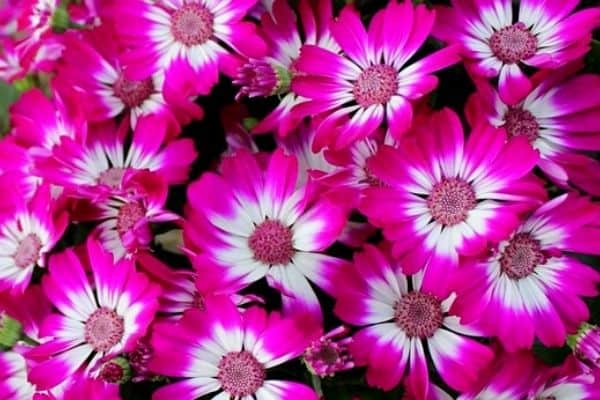
Climate
The ideal temperature range for cinerarias is between 55 and 65 ℉ (12 to 18 ℃).
Once the temperature reaches 80 ℉ (26 ℃) the plants will stop flowering and below 35 ℉ (1 ℃) the plants will die off.
Soil
Cinerarias prefer slightly acidic soil but they can tolerate most soil types as long as it’s easily draining.
Dig some compost or broken down manure into the soil before planting your seedlings in the garden.
Sunlight
Cineraria plants grow best in partial shade.
Avoid planting them in a spot that receives full sun because the flowers will fade.
Watering
Cinerarias are susceptible to root root so take care to ensure that the soil doesn’t become waterlogged.
Check the soil before watering to make sure the top layer of soil has dried out.
Growing cineraria plants from seed
The best time to plant cineraria seeds is during fall.
Fill a tray with seed raising mix and sprinkle the seeds over the soil.
Cineraria seeds are very fine so try to space them out as best you can.
Lightly press the seeds into the soil but don’t cover them over with soil because they need light to germinate.
Spray the seeds with a spray bottle and place the seed tray away from direct sunlight.
It usually takes about 10 days for cineraria seeds to germinate.
Once the true leaves appear you can move the seedlings into a spot that receives sunlight for part of the day.
Plant the seedlings out in the garden when they reach about 4 inches (10 cm) tall.
Cineraria plants will begin flowering around 4 months after planting.
Cinerarias easily reseed themselves in the garden so if you’d like more plants the following year leave the flowers on the plant until they produce seed.
You can prevent reseeding by snipping off the flowers as soon as they begin to fade.
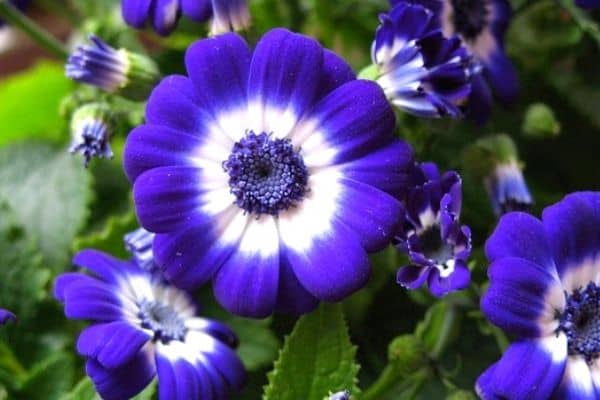
Growing cinerarias indoors
Indoor cineraria plants should be planted in a pot that is at least 6 to 8 inches (15 to 20 cm) deep and it should have drainage holes in the bottom.
Cinerarias don’t mind being root bound and they actually flower better when they’re slightly root bound.
The potting mix should be loose and easily draining to prevent root rot.
Place the plant in filtered light and allow the top layer of soil to dry out slightly before watering.
Cinerarias are sensitive to temperature fluctuations so avoid keeping the plants near cold draughts, heaters or air conditioners.
Fertilizer
Feed your plants with a liquid fertilizer watered down to half strength every month during spring and summer.
Pests and diseases
Cineraria seedlings can be eaten by slugs and snails so it’s a good idea to set out some snail pellets or a beer trap to protect your plants in the garden.
Aphids are another common problem with cinerarias and you’ll find them on the underside of the leaves. Spray the plants with insecticidal soap to get rid of aphids.
Indoor cinerarias can be affected by spider mites, especially in dry conditions.
You can wipe or spray the leaves with neem oil to get rid of spider mites.
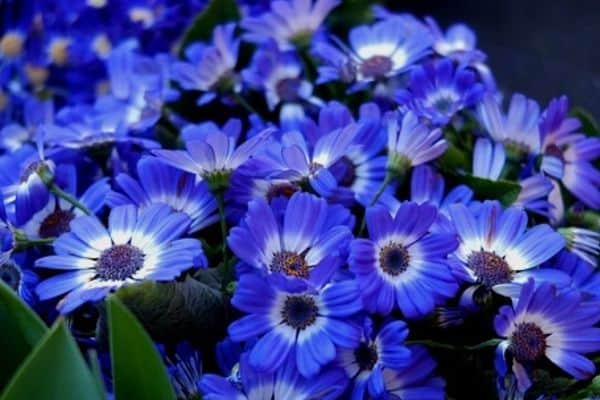
Frost tolerance
Cineraria plants grow best in cool climates but they aren’t frost tolerant.
Once frost hits the plants they’ll die off.
In warm climates where frost isn’t a problem you can overwinter the plants in the garden by covering the plants with leaves and they’ll come back the next year.
So there are my tips for growing cineraria flowers.
With the right location and conditions, you can expect an abundance of beautiful flowers.
RELATED ARTICLES
Have you tried growing cinerarias in your flower garden or in containers? Let me know in the comments below.
Are you on Pinterest? I have boards dedicated to Flower Gardens and Gardening Tips that you may enjoy. You can also find me on Facebook.
Latin names – Pericallis x hybrida, Pericallis cruenta and Senecio cruentus [1]


